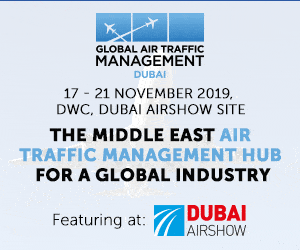The growth in both passenger movements and air cargo that will occur over the coming decades is one of the greatest challenges facing the global air traffic management community. Investment into new airports and runways will help address the capacity shortfalls, but the dynamics and pressures of the industry are far more complex.
What technological changes will the industry face in the foreseeable future? How do we balance demand with sustainability? Can we incorporate new technologies in a safe and controlled manner? How do we build an operating environment to anticipate and accommodate future aircraft types? The role of air traffic management at any level – airport, national, regional or global – cannot be underestimated.
Air space is so intrinsically linked y et the systems that manage them have not yet been. Though commercial, sovereign and military pressures have limited collaboration in the air traffic management industry, it is universally recognized that collaboration is the key to overcoming current and future challenges. But what does this collaboration entail?
et the systems that manage them have not yet been. Though commercial, sovereign and military pressures have limited collaboration in the air traffic management industry, it is universally recognized that collaboration is the key to overcoming current and future challenges. But what does this collaboration entail?
From 17 to 21 November 2019, the Global Air Traffic Management (GATM) Conference and Exhibition – a feature of the Dubai Airshow – will bring together the leading minds and experts in the industry to tackle many of these issues.
Some GATM industry speakers are sharing their perspectives below. For the latest information on the presenters, programme, etc., visit the event website here.
“At Hartsfield-Jackson Atlanta International Airport, we have taken the step to forge city to city and airport to airport agreements – we call these Sister Airport Agreements. The two that impact the airport are the MOU between the Netherlands and Atlanta to promote investment through trade and logistics corridors with the airports as the main drivers, and a similar agreement between HubStart Paris, and Atlanta. We at the airport are in the middle of implementing the trade corridor project with Schiphol Amsterdam Airport. These agreements allow for collaboration on building new and additional air service, which leads to greater trade and collaboration. We have been learning from them and they learn from us. We share ideas, resources and standards which foster trade and investment at both ends.” ~Elliott Paige, Director, Air Service Development, Hartsfield-Jackson Atlanta International
“Collaboration must come at the national level, so beyond aviation, there are challenges with respect to who contributes what. The size of a country or its air space doesn’t necessarily equate to those who should contribute the most. In the Middle East, there are bilateral agreements but not regional ones which focus on the common objectives of safety and throughout. Regional agreements will become especially important as we link the growing Asia Pacific market to Europe.” ~John Reavy, Head of Aviation Business Advisory, Mott McDonald
“We can improve collaboration through agreements and looking broader than the commercial, regional or sovereign boundaries. Those with the technology, training and systems need to work with those who don’t. As we are all interconnected, the investments made in one region, like Europe, will benefit those in another, like Africa. We need a global perspective on the return on investment for ATM which is backed by political and commercial will.” ~Marzoog Algamdi, Learning and Development Specialist, General Authority of Civil Aviation – Saudi Arabia
“In short, collaboration is the best way to advance the industry. If regions start to collaborate, the flow-on effect will reach the globe. Collaboration is everything; it is working together, planning together, sharing data, and Europe has been managing it well. South America, through the leadership of CANSO, is looking at collaboration between ANSPS. It is the kind of initiative which would benefit Africa and the Middle East… We are moving to freer routing and the pilot’s choice of the best route. To do this, the pilot needs data which requires collaboration between ANSPs and other entities. Not only at the departure and arrival destinations but through the airspace the plane travels through.” ~Ahmad Bakkar, Director Business Development, Netherlands Aerospace Centre
“A barrier to more collaboration is the perception that differing objectives exist between airports, airlines and ANSPs. It might not be perfect but European authorities and the establishment of Eurocontrol has proven that it is possible to sacrifice certain individual priorities for the collective benefit of aviation. For that type of collaboration, you need trust between the aviation authorities, airports, airlines and ground service partners across a region. Locally in the UAE, we have challenges with flow control and capacity restrictions from the east to west. They will only be overcome by working closely with those around us and having more flow predictability and consistency across adjacent air space too.” ~Damian Ellacott, VP, Airport Operations Control Centre, Dubai Airports

